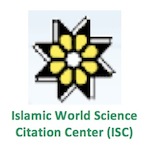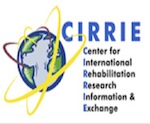


Google Scholar citation report
Citations : 5373
ASEAN Journal of Psychiatry received 5373 citations as per google scholar report
ASEAN Journal of Psychiatry peer review process verified at publons
| Journal Name | ASEAN Journal of Psychiatry (MyCite Report) | ||||
|---|---|---|---|---|---|
| Total Publications | 456 | ||||
| Total Citations | 5688 | ||||
| Total Non-self Citations | 12 | ||||
| Yearly Impact Factor | 0.93 | ||||
| 5-Year Impact Factor | 1.44 | ||||
| Immediacy Index | 0.1 | ||||
| Cited Half-life | 2.7 | ||||
| H-index | 30 | ||||
| Quartile |
|
- Anxiety Disorders
- Behavioural Science
- Biological Psychiatry
- Child and Adolescent Psychiatry
- Community Psychiatry
- Dementia
- Community Psychiatry
- Suicidal Behavior
- Social Psychiatry
- Psychiatry
- Psychiatry Diseases
- Psycho Trauma
- Posttraumatic Stress
- Psychiatric Symptoms
- Psychiatric Treatment
- Neurocognative Disorders (NCDs)
- Depression
- Mental Illness
- Neurological disorder
- Neurology
- Alzheimer's disease
- Parkinson's disease
Abstract
THE POTENTIAL VALUE OF EARLY LONG-TERM USE OF MEMANTINE TO DELAY THE ONSET OF ALZHEIMERS DEMENTIA IN GENETICALLY LOADED HIGH RISK INDIVIDUALS TO DEVELOP ALZHEIMERS DEMENTIA WITH AND WITHOUT CARDIOVASCULAR RISK FACTORS
Author(s): Mohammed AllamMemantine is NMDA (N Methyl D Aspartate) antagonist used to manage dementia, it works by blocking the glutamate receptors that stimulate excite-toxic neuronal death that results from excessive calcium influx into the neurons which in turn causes mitochondrial suffocation and neuronal death. Memantine is an uncompetitive, low affinity, open-channel blocker that reduces the glutamate induced overstimulation of the receptors that results in neuronal damage. It is unlike potential neuroprotective agents that block virtually all NMDA receptor activity including blockade of those essential for normal neuronal functioning. On the other hand, the pathology of dementia we are tackling here appears several years and may be decades earlier in structural and functional MRI studies before the development of the full-blown clinical picture of Alzheimer’s Dementia. The use of Meantime in this paper is targeting the excite-toxic etiology mainly and the development of Alzheimer’s Dementia. We used the term and definitions of critical numbers in a synonymous way to talk about brain reserve and to hypothesize the potential mechanism of Memantine in delaying the onset of symptoms of Alzheimer’s Dementia if used as a monotherapy irrespective of other pathologies such as the neurofibrillary tangles and plaques formation. Meanwhile, in the same hypothesis we left a room for using memantine and other disease modifying agents to be combined and used to tackle more than one etiological factor in those individuals with genetic risk to develop Alzheimer’s Dementia with and without cardiovascular risk factors.


























